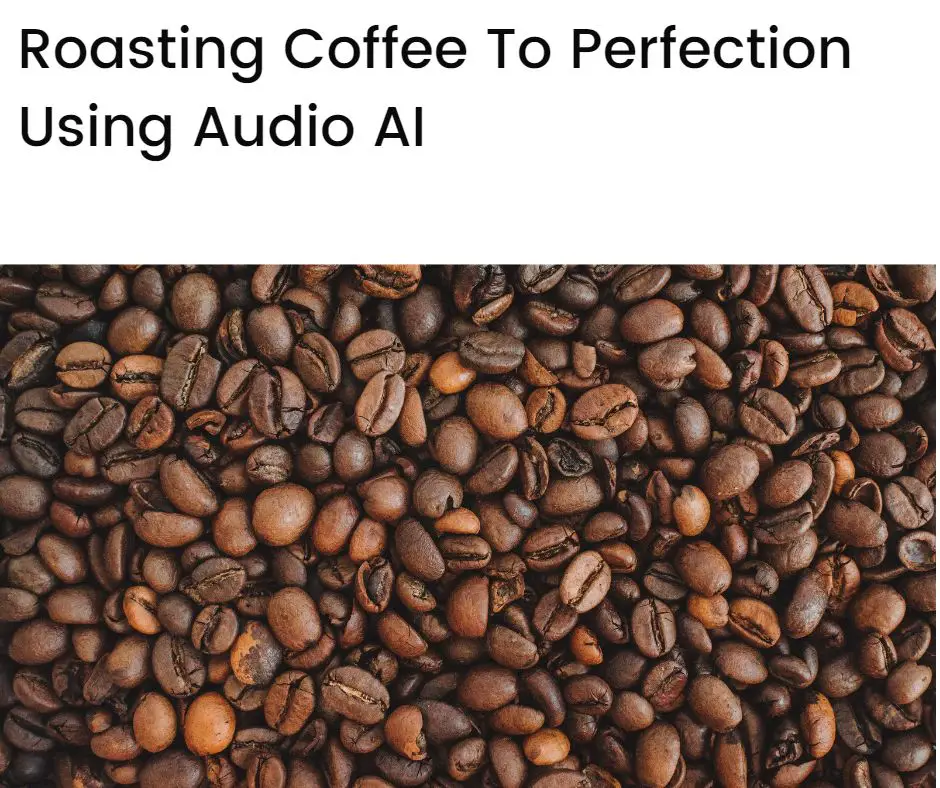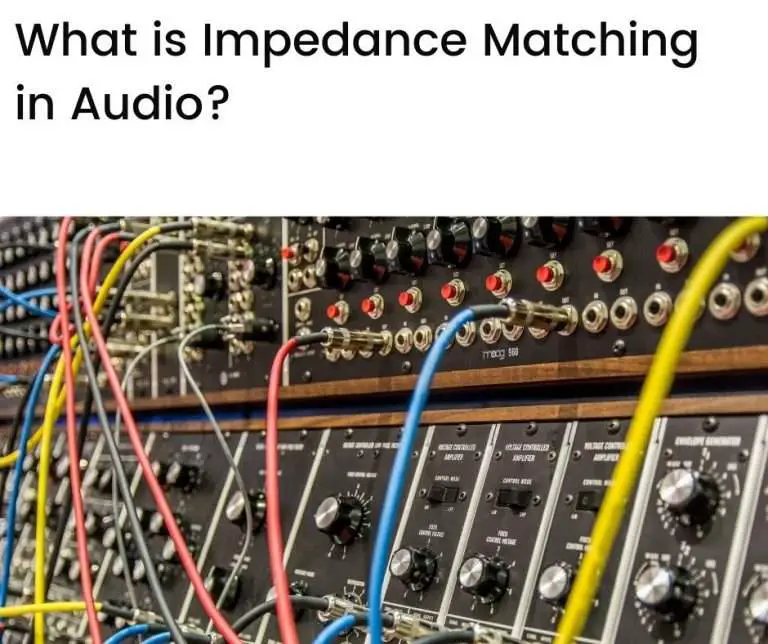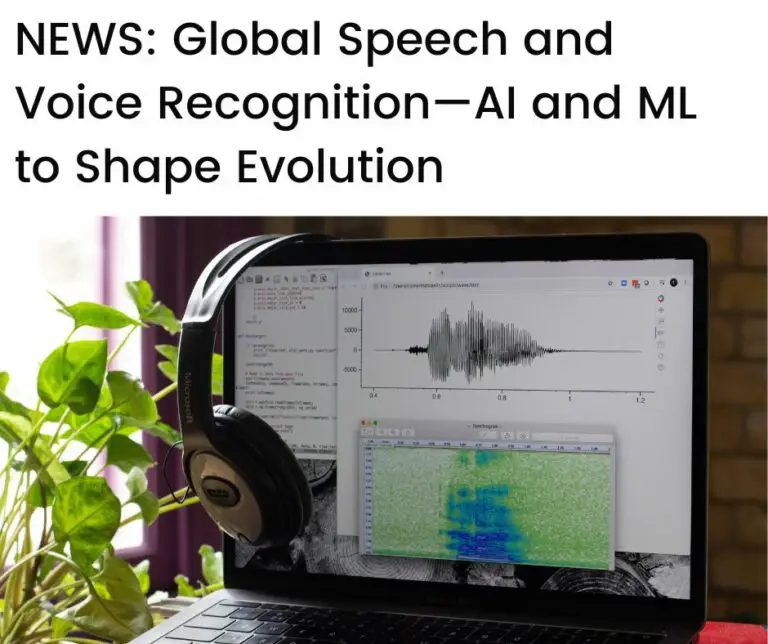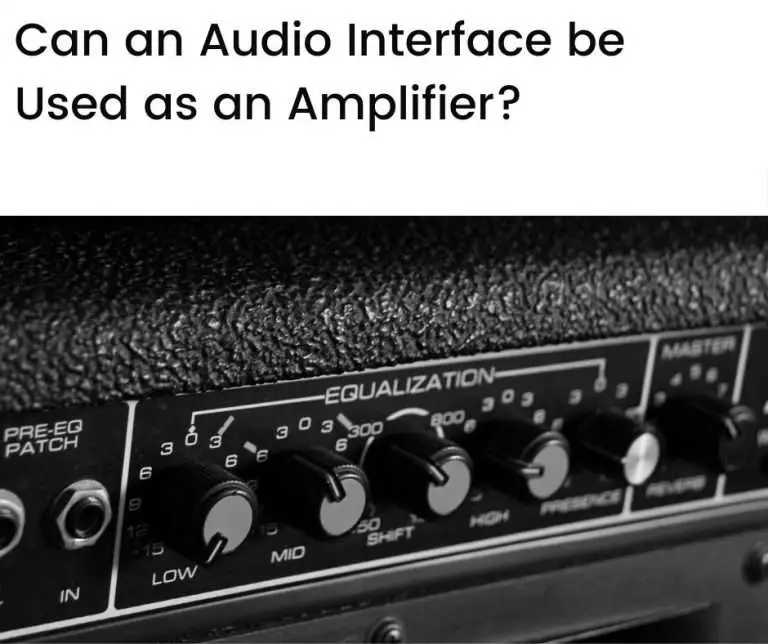Perfecting your favorite cup of coffee has gotten easier thanks to audio AI.
If you’re a coffee lover, you may have wondered how your favorite cup of morning brew gets to taste so good.
There’s the skill of the barista, of course, and the caliber of espresso machinery involved.
But there’s also the roasting of the coffee beans—getting this right makes a big difference to the taste of your morning cup.
Coffee roasting is a complex process that takes a fair amount of skill. And it’s not easy to get a consistently good outcome amidst the hustle and bustle of a busy coffee roasting facility.
That’s why Norwegian coffee roasting specialist—Roest—has turned to artificial intelligence applied and audio technology (audio AI) to get the best results.
In this article, we’ll look at the intriguing application of AI—and in particular audio AI—to roasting consistently good coffee.
The flavor is in the browning
Have you heard of the Maillard reaction (MR)?
(apparently, it’s pronounced my–YAR)
It’s an important part of cooking—the stage at which food starts to brown. Think of browning onions, aubergines, steaks, and potatoes, for instance.
And if you’re like a lot of people, right now you may be thinking “yum!”—it’s this browning process that adds so much flavor to many of your favorite dishes.
So, what does the MR have to do with coffee roasting?
Listening for that first crack
As it happens, managing how long the MR process takes is one of the most important aspects of coffee roasting.
According to Guy Snead of Rounton Coffee, by extending the MR a bit longer you’ll get “a heavier mouthfeel and rich caramel notes”.
Or, if you prefer a coffee with “inherently fruity qualities” and “pronounced acidity” you’ll need a shorter MR.
So, tracking the MR is fundamentally important to coffee roasting. And a key indicator of how the MR is progressing is when the first crack of roasting coffee beans occurs.
You hear the first crack when water in coffee beans starts to turn to steam, and as a result, the beans start to pop open, just like in popcorn.
Professional roasters usually listen for the first crack manually, requiring constant attention to help identify the exact timing of the crack.
Since it’s a manual process, consistency varies amongst roasters.
It also takes valuable time away from the roasters’ busy schedule—since it requires dedicated attention—and limits the roasters’ ability to manage other tasks.
Automating the identification of the first crack, therefore, ensuring accuracy and consistency, would be of great benefit to coffee roasters. And this is where audio AI can help.
Sample roasting coffee to perfection
Roest specializes in sample roasting, i.e., roasting small amounts of green (raw) coffee beans to determine their specific qualities.
Sample roasting is a vital part of the coffee supply chain. It provides exporters, importers, and coffee roasters the information that they need to make sound purchasing decisions.
Given how important sample roasting is, it’s essential to manage the roasting process carefully to establish the quality of the batches from where the coffee samples are taken.
Roest is an award-winning manufacturer of sample roasting machines. Their machines are known for quality and precision, both of which matter for sample roasting.
And Roest has turned to audio AI to take their sample roasting machines to the next level.
How audio AI helps with coffee roasting
As we’ve seen, identifying the first crack is an important part of the coffee roasting process.
By partnering with another Norwegian firm—Soundsensing, an audio and (AI) machine learning specialist—Roest and Soundsensing have developed an automated solution for identifying the first crack with a high degree of accuracy.
Here’s how it works:
- Using a “tiny ML” implementation, i.e., running machine learning on tiny devices in an IoT (internet-of-things) framework, a small microcontroller is placed inside each coffee roasting machine
- The microcontroller includes a small microphone and audio-sensing firmware that listens to the coffee beans during the roasting process
- A machine learning algorithm (i.e., neural network) that’s been pre-trained to recognize and identify the first crack of coffee beans with a high degree of accuracy is embedded in the microcontroller
- At a pre-set time after identifying the first crack, the roasting machine automatically switches off and stops the roasting process
This audio AI solution makes the roasting process fully automated and:
- Frees up roasting operators for other tasks
- Improves the consistency of the roasting process
- Maintains standards, regardless of the skill level of individual roasting operators
- Allows easier scaling up of the roasting process
Roest has been shipping this audio AI solution in their roasters since 2020.
The future beckons for audio AI solutions
This type of audio AI application—using machine learning and audio technology to identify the first crack in coffee roasting—is the first of its kind in the world.
And the possibilities for future applications of a similar kind are many and varied.
Soundsensing is already involved in many areas of industrial machine monitoring through the use of audio. Using audio, AI, and IoT, the capabilities and deployment possibilities of such smart monitoring are very promising!
In summary
- Coffee roasting is a complex process, a key part of which is detecting the first crack of roasting coffee beans
- Sample roasting is a vital part of the coffee supply chain, in which valuable time and resources are dedicated to detecting the first crack
- In a world-first, two Norwegian firms—Roest and Soundsensing—have developed an automated audio AI solution to identify the first crack in the coffee roasting process
- This AI solution frees up roasting operators for other tasks and improves the consistency and accuracy of the coffee roasting process
- Roest has been shipping their award-winning coffee roasting machines with the included audio AI solution since 2020
- The future possibilities for audio AI solutions are significant, given the capabilities that can be deployed using AI-powered audio devices







